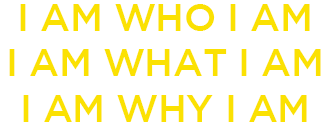“The Great Way” begins with “no know” and ends with “know no.”
“The Great Way” (or Tao), a central concept in Taoism, is the natural flow of the universe and the path to harmony. It is the path to liberation from our temporary individual self (which exists only in the now) to realizing our eternal oneness with the Everything.
The Everything is the soul and its manifestation in the now.
The soul is what every thing is before and after it is what it is whatever it is in the now. The soul is “no-thing,” just energy.
The now is an infinite number of seemingly separate things. However, their separateness is an illusion, as all things are interdependent. Ultimately, all things in the now are one thing: the manifestation (expression) of the soul.
The self is who we are in the now.
The self conceives the now as a duality: the self and that which is not the self. Upon this foundational duality, we perceive separateness between all things.
The self’s perception of separateness is based on illusions (memories, stories and identities) that define who we are, not what we are (the Everything).
The path to liberation begins when we realize we “no know.” That is, our self does not know what we are. We then dispense with our heretofore perception of reality based on the self and its illusions.
Without the illusion of separateness, we come to “know no;” to know the “no-thing” (the soul).
Knowing the soul, we experience the expression of the soul, the now, as the interconnectedness of all things.
From the soul to the soul’s expression, the now, and the reverting to the soul is the natural flow of the universe. Upon coming to the realization that this is what we are, we are in harmony with the flow of the universe.
Meditation is a central practice of “The Great Way.” Through meditation, we can let go of the self which in turn liberates us from the self.
Holding the self makes the hand a fist, an aggressive gesture. Letting go the self, the hand opens like a handshake that allows us to connect with all beings and things (facets of the now). The connection is love.
In meditation, we focus on breathing and the space between breaths. The breaths are the now and the space between breaths is the “no-thing” (the soul).
In the space of the “no-thing,” we realize the now is one thing (the expression of the soul) and we are the consciousness that created it. We are the Everything.
With the wisdom of knowing we are the Everything, we realize our self’s sense of separateness and the self itself are illusions. This wisdom leads us to love and compassion for all facets of the now.
The sounds of “no know” and “know no” are the same, but their meanings are distinct. The same energy (sound) cannot be fully captured in words, just as experiential liberation transcends description. Experience reveals “no know” and “know no” are one, revealing the Tao.

